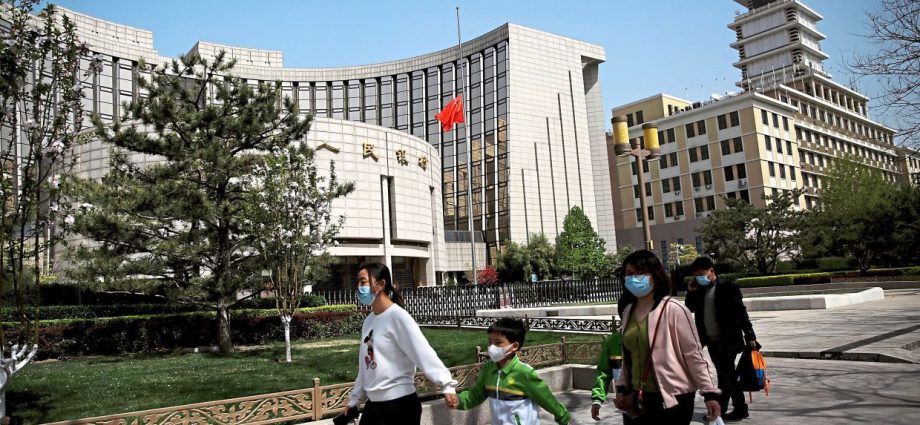
SHANGHAI: China’s central bank partially rolled over maturing medium-term policy loans while maintaining the interest rate as expected on Thursday, as hawkish U.S. Federal Reserve tightening limited room to manoeuvre monetary policy to support the economy.
The pause in monetary easing came as the yuan bears increasing downside pressure after the People’s Bank of China (PBOC) surprised markets in August by lowering key rates, a move that further widened policy divergence with other major economies that are raising rates aggressively.
The PBOC said it was keeping the rate on 400 billion yuan ($57.46 billion) worth of one-year medium-term lending facility (MLF) loans to some financial institutions unchanged at 2.75% from the previous operation.
With 600 billion yuan worth of such loans maturing on the same day, that resulted in a net withdrawal of 200 billion yuan from the banking system.
The PBOC in an online statement said Thursday’s operation would “keep banking system liquidity reasonably ample.”
In a poll of 28 market watchers conducted this week, 27 respondents forecast no change to the MLF rate. And among them, 17 expected the PBOC to partially renew the maturing loans, while the other 10 projected a full rollover.
Xing Zhaopeng, senior China strategist at ANZ, said the pause in monetary easing this month showed that the authorities were wary of recent yuan depreciation.
“The central bank may continue to keep liquidity reasonably ample, at a relatively high level, while relying on tax rebate and fiscal expenditures to make up for extra fund injections,” Xing said.
He expects the PBOC to lower banks’ reserve requirement ratio (RRR) by a small scale in October to offset quarterly tax payments.
The yuan has lost more than 3% against the U.S. dollar since mid-August to near the psychologically important 7 yuan mark.
“PBOC is not likely to undertake any measure that could widen the interest rate differential (between the United States and China) in favour of the greenback,” analysts at Maybank said in a note, expecting a 10 to 20 basis points cut by the first quarter in 2023 to underpin the economy.
A widening yield gap could accelerate yuan depreciation and risk capital outflows.
Some market traders also said authorities may hold off from easing in the near term, but expect some liquidity injection later this year due to heavy MLF maturity, which totalled 2 trillion yuan in the fourth quarter.
The steady MLF rate, which now serves as guidance to the country’s lending benchmark loan prime rate (LPR), indicated that chances for a cut to the LPR fixing in September is low, said Marco Sun, chief financial markets analyst at MUFG Bank (China).
The central bank also injected 2 billion yuan through seven-day reverse repos while keeping borrowing cost unchanged at 2.00%, it said in an online statement.
The PBOC surprised markets in August by lowering both rates by 10 basis points to revive credit demand and support an economy hurt by COVID-19 shocks. – Reuters

